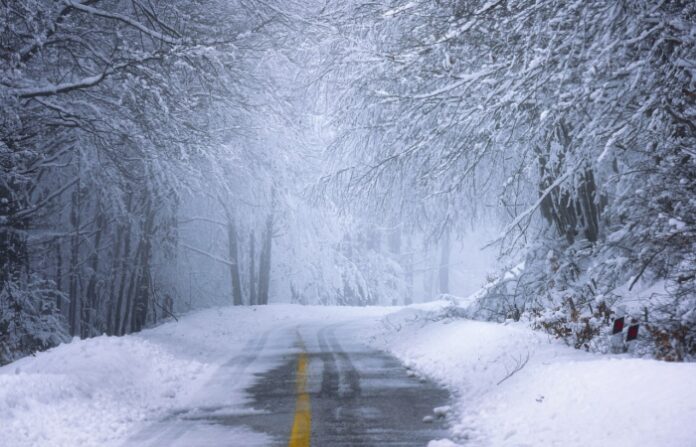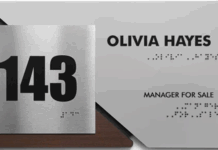Winter’s frosty grip transforms the landscapes into breathtaking wonderlands, but beneath the shimmering snow and ice lurks a hidden danger: slippery surfaces. Every year, icy sidewalks, driveways, and roads contribute to countless slips, falls, and accidents, disrupting lives and businesses alike. While the urge to combat the ice is strong, simply ordering bulk calcium chloride might not be the wisest decision. Choosing the right deicer for your specific needs is crucial, and this guide aims to equip you with the knowledge to navigate the winter battlefield victoriously.
The Winter Wonderland Nightmare
While snow may paint a picturesque scene, hidden beneath its sparkling blanket lies a silent threat: ice. Every winter, these seemingly innocent frozen surfaces transform sidewalks, driveways, and roads into treacherous obstacle courses. The consequences of a fall on ice can be severe, ranging from minor bumps and bruises to serious injuries like broken bones and head trauma. Statistics reveal a grim reality: falls on ice account for countless injuries and even fatalities each year, impacting individuals, families, and communities alike.
While resorting to any available road dust control products for sale might be tempting for certain situations like unpaved parking lots, understanding the specific threats posed by ice and the limitations of alternative solutions is crucial for making informed decisions about winter safety. Fortunately, a wide range of deicers exists, each with its strengths and weaknesses, to help us combat this seasonal adversary.
Deicer Diversity: Unveiling the Options
Stepping into the realm of deicers can feel overwhelming, much like facing a blizzard head-on. But fear not, for beneath the seemingly complex facade lies a collection of readily available warriors ready to fight the icy foe. Here are the main protagonists in the deicing drama of the right deicer:
- Rock Salt (Sodium Chloride): The classic hero, known for its affordability and wide availability. It works effectively at moderate temperatures (above 20°F), melting ice through an endothermic process (absorbing heat from the surroundings). However, its effectiveness wanes at colder temperatures and it can be harsh on concrete and vegetation.
- Calcium Chloride: The exothermic champion, generating its own heat to melt ice even at temperatures as low as -25°F. This powerhouse comes at a higher cost than rock salt, and its potent nature requires caution regarding potential damage to plants and concrete. If you need to conquer extreme cold, calcium chloride is your knight in shining armor, but consider its “bulk calcium chloride” option for larger areas to keep costs in check.
- Magnesium Chloride: The environmentally conscious contender, boasts a gentler touch on vegetation and concrete compared to its chloride counterparts. It works effectively down to 5°F but loses its melting power at colder temperatures. While not as fast-acting as calcium chloride, it might be the eco-friendly hero for milder climates.
- Acetate-Based Deicers: The gentle giants, known for their minimal impact on concrete, plants, and even pets. They work best at slightly warmer temperatures (above 15°F) and rely on an endothermic process for melting. While more expensive than rock salt, their slower melting rate and environmental friendliness make them ideal for sensitive areas.
Choosing the right deicer depends on a unique battleground. Stay tuned as we explore the factors that will guide you to your deicing champion!
Choosing Your Champion: Factors to Consider
Now that you’ve met the deicing contenders, it’s time to strategize. Before selecting your champion, consider these key factors:
- Temperature: The battlefield’s temperature dictates which warriors will thrive. Remember, rock salt reigns at moderate temperatures, calcium chloride conquers the coldest depths, magnesium chloride battles mid-range chills, and acetate-based deicers excel in slightly warmer zones. Consult road salt companies or deicer manufacturers for specific temperature ranges to ensure you choose the right weapon for the job.
- Surface Type: Not all heroes fight on the same terrain. While rock salt and calcium chloride work well on concrete and asphalt, their harshness might damage delicate surfaces like wood or pavers. Magnesium chloride offers a gentler touch, and acetate-based deicers are often the safest choice for sensitive surfaces. Choose your deicer based on the specific battlefield you need to conquer.
- Environmental Concerns: Consider the impact your deicing battle will have on the surrounding environment. While rock salt’s affordability is tempting, its runoff can harm vegetation and water quality. Calcium chloride demands caution due to its similar impact. Magnesium chloride offers a more eco-friendly approach, with acetate-based deicers being the gentlest on the environment. Remember, a responsible victory considers the well-being of all participants, not just humans.
- Budget: Every hero has a price tag. Rock salt remains the most cost-effective option, followed by magnesium chloride. Calcium chloride comes at a premium, especially when considering its higher application rates. Acetate-based deicers are often the most expensive but might be worth the investment for sensitive areas or environmentally conscious battles.
Beyond the Basics: Advanced Deicing Strategies
While choosing the right deicer is crucial, seasoned warriors know that mastering the art of winter deicing goes beyond simply throwing down some granules. Here are some advanced strategies to enhance your deicing prowess:
- Pre-wetting: This technique involves mixing your deicer with a brine solution before application. The brine lowers the freezing point of the deicer, allowing it to work effectively at even colder temperatures. Additionally, the pre-wetting solution helps the deicer adhere better to surfaces, increasing its efficiency and reducing waste.
- Blending Deicers: Combining different deicers can leverage their individual strengths. For example, mixing rock salt with calcium chloride can extend the effective temperature range while reducing the harshness of calcium chloride alone. Consult deicer manufacturers or “road salt companies” for recommended blends based on your specific needs.
- Heated Mats: For high-traffic areas like walkways or entrances, heated mats offer a permanent solution. These mats are embedded under the surface and generate heat to melt ice and snow automatically. While more expensive upfront, they can be cost-effective in the long run for heavily used areas.
- Robotic Snow Removal: Cutting-edge technology is changing the game with robotic snow removal solutions. These autonomous machines can clear snow and apply deicers, enhancing efficiency and safety, especially in large areas like parking lots or commercial properties.
- Dowflake Xtra: As an example of an innovative deicer, consider Dowflake Xtra. This calcium chloride blend boasts improved melting power and lower application rates compared to traditional calcium chloride, offering a potentially cost-effective solution for colder climates.
Remember, effective deicing is not just about choosing the right weapon, but also mastering the art of strategy and utilizing diverse tactics. By incorporating these advanced techniques, you can transform yourself from a winter warrior into a deicing champion, ensuring safe and clean surfaces throughout the coldest months.
Conclusion
Conquering winter’s icy grip requires knowledge and strategy. This guide has equipped you with the essential tools to navigate the world of deicers, understand their strengths and weaknesses, and choose the champion best suited for your battlefield. Remember, consider the temperature, surface type, environmental impact, and budget to make informed decisions. Explore advanced tactics like pre-wetting, blending, and innovative solutions to truly master the art of winter deicing. With the right approach, you can ensure safe and accessible walkways, driveways, and roads, transforming winter wonderlands into safe and welcoming spaces for everyone.
Find a Home-Based Business to Start-Up >>> Hundreds of Business Listings.

















































